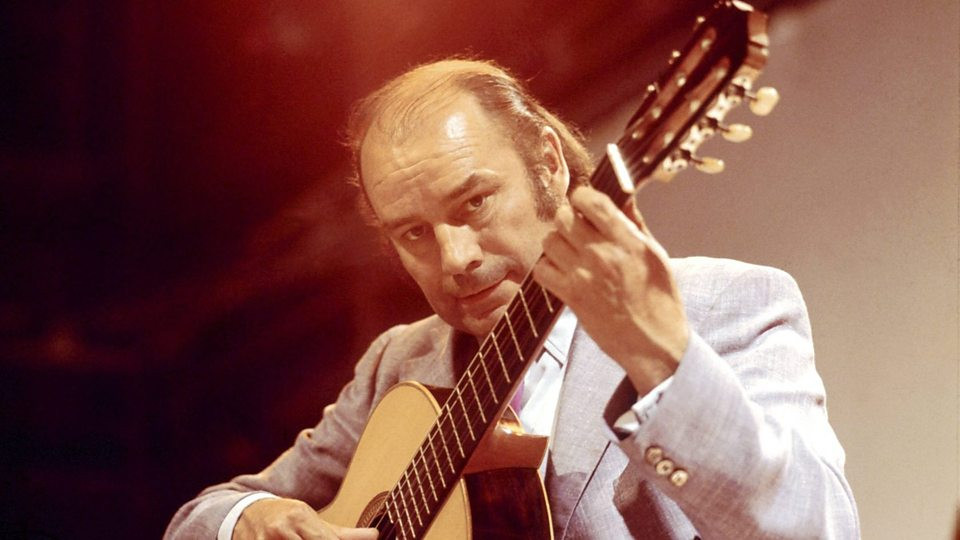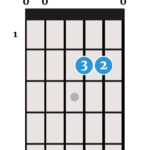For most individuals drawn to the enchanting sounds of the Classical Guitar, the pursuit is fueled by passion, not the allure of riches. While financial wealth may be a rare outcome, a fulfilling and sustainable career in music is within reach. This article delves into the diverse avenues through which classical guitarists piece together their livelihoods, offering insights for aspiring and established professionals alike. It’s about moving beyond simply “scraping by” and achieving a level of comfortable sustenance through dedication, ingenuity, and a deep connection to the classical guitar world.
Making a living as a classical guitarist today requires creativity and resilience. Gone are the days of solely relying on concert performances. Modern guitarists often blend various roles: performer, educator, recording artist, composer, and promoter. This multifaceted approach allows for diversification of income streams, turning a passion into a viable profession. This exploration will uncover the financial realities of these different paths, drawing on the experiences of performers, educators, and industry experts. The goal is not to expose individual earnings, but to provide a comprehensive overview of the financial landscape for classical guitarists in today’s world.
(Note: All monetary figures are in U.S. dollars for consistency.)
Concert Performances: Navigating Fees and Expenses
Concerts remain a vital, albeit fluctuating, source of income for classical guitarists. However, performance fees are incredibly variable, influenced by a complex interplay of factors. A guitarist’s reputation, the prestige of the venue or festival, the type of engagement (solo recital, concerto, chamber music), and the organizer’s resources all play a significant role in determining compensation.
Q: What fee range can a guitarist anticipate for a concert performance?
Insights from industry professionals reveal a wide spectrum:
- Emerging Guitarists: For lesser-known artists, concert fees may be modest, often around $200 or slightly more, plus potential expense coverage. This level often represents local gigs or opportunities to build experience.
- Established Players: Guitarists with a solid reputation can typically command fees in the $750 range, which is common for appearances at international classical guitar festivals. This reflects a growing recognition and demand for their artistry.
- World-Class Artists: Top-tier, internationally acclaimed classical guitarists can earn substantial fees, ranging from $2,000 to $3,000 or even higher for prestigious events. Ensembles, such as top quartets, can command fees of $5,000 or more, reflecting their collective draw and complexity of performance.
- Exceptional Cases: While rare, fees exceeding $10,000 are possible for exceptionally renowned players who can guarantee significant ticket sales. The era of astronomical fees like those once commanded by legends such as John Williams ($20,000+) appears to be diminishing, yet top performers still garner substantial compensation.
A prominent international classical guitarist shared a breakdown of their typical fees: $10,000 for two concerts at a single venue, $5,000 for a solo recital, $2,500 for a chamber music performance, and $2,500 for a classical guitar society recital. These figures illustrate the tiered structure of concert fees based on performance type and venue.
A guitarist with international recognition, but not yet at the highest echelon, reported solo recital fees ranging from $950 to $2,500, depending on recital length and venue size. Orchestral performances commanded approximately $4,000, highlighting the value placed on concerto appearances.
Duo performances can also yield respectable income. One guitarist recounted splitting an $8,000 fee with their partner for a high-profile concert at a reputable U.S. venue. However, festival pay scales can vary dramatically, even within prestigious events. A New York festival might offer $1,500 per concert, while a German festival could reach $3,000 for even renowned artists. This variability necessitates strategic planning, often requiring artists to combine multiple European festival appearances to generate substantial income.
Smaller, community-based classical guitar societies operate with tighter budgets. In regions like the UK, these societies might be hesitant to exceed £200 (approximately $300) for an evening performance, often preferring to offer a percentage of door takings, potentially with a lower guaranteed minimum (e.g., £120 or $180). This reflects the financial constraints faced by smaller organizations supporting classical guitar music.
It’s crucial to acknowledge the invaluable support provided by music industry companies like D’Addario, Savarez, and La Bella. Their sponsorships of festivals, competitions, and concerts are essential for many emerging classical guitarists. The D’Addario Foundation, in particular, is recognized for its extensive global support of classical guitar events and its New York City concert program, which has been instrumental in launching the careers of numerous young artists.
 Julian Bream in concert
Julian Bream in concert
Q: How are concert-related expenses like travel, food, and accommodation handled?
Expense coverage is a crucial aspect of concert engagements. Practices vary depending on the event type and artist’s negotiating power:
- Festivals & One-Off Appearances: For single performances, especially at festivals, organizers typically cover travel expenses, including flights, as well as accommodation and meals. This comprehensive support is often part of the standard festival arrangement.
- Smaller Societies: To minimize costs, smaller classical guitar societies often arrange for artists to stay with local organizers. The agreed-upon performance fee may then incorporate an element to offset travel expenses if not directly covered.
- Negotiated Agreements: Experienced artists often negotiate specific terms. Flights are commonly covered in economy class. Round-trip transatlantic flights can range from $800 to $1,000. Some agreements are “all-inclusive,” requiring the artist to deduct travel costs from their fee, which also impacts manager commissions, as those are calculated from the total fee.
- Artist Leverage: An artist’s prominence influences expense negotiation. Popular acoustic guitarists often expect per diems and lodging. Classical guitarists frequently prioritize securing included housing arrangements.
- Variable Coverage: Expense coverage isn’t always guaranteed. Some higher-level guitarists build airfare into their fees. However, many artists must independently manage travel and accommodation, particularly in less lucrative engagements.
- Foundation Support: When promoters lack the resources for international travel, artists may rely on foundation grants or sponsorships to bridge the financial gap, highlighting the importance of diversified funding strategies.
Q: How does offering a master class augment an artist’s income?
Master classes are a common and valuable addition to concert engagements, providing both educational outreach and supplementary income. The fee for a master class typically ranges from $200 to $600, often added to the performance fee. In some cases, it might be incorporated into a single, comprehensive payment. Top-tier artists can command higher master class fees, reflecting their expertise and demand.
Recording and CDs: Navigating the Digital Landscape
The recording industry has undergone a dramatic transformation, particularly with the rise of digital music consumption. The era of massive CD sales, once enjoyed by classical guitar icons like Andrés Segovia, Julian Bream, Christopher Parkening, and John Williams, is largely a thing of the past. While top-tier artists can still generate reasonable income from album sales (both physical and digital downloads), the numbers are significantly reduced compared to previous decades.
Today, selling 10,000 copies of a classical guitar album is considered a major success, mirroring trends in jazz and other niche genres. Many classical guitar CDs sell far fewer, often failing to recoup the initial recording investment.
While established record labels specializing in classical guitar music still exist, artist advances are generally small, if offered at all. Some artists on major labels now contribute to or fully cover recording expenses upfront, a departure from the traditional model where labels funded recordings and artists recouped costs through royalties. For some, label support remains valuable for promotion and distribution networks.
However, a growing number of musicians across genres are choosing to self-produce and distribute albums to control costs and maintain direct access to their product for concert sales.
Q: Why record albums in the current music climate?
Despite the diminished financial returns, recording remains crucial for several reasons:
- Artistic Statement: An album serves as a definitive artistic statement, showcasing a guitarist’s skills, stylistic preferences, and chosen repertoire. It’s a tangible representation of their artistic identity.
- Promotional Tool: Recordings act as calling cards, demonstrating an artist’s capabilities to concert promoters and potential collaborators.
- Radio Exposure: Classical guitar music still finds airplay on classical radio stations, offering valuable exposure to a wider audience.
- Concert Sales: Selling CDs at concerts can provide a steady, long-term income stream, particularly for self-produced albums where profit margins are higher.
- Career Advancement: Debut albums, often structured as varied repertoire recitals, serve as a portfolio of skills, demonstrating an emerging guitarist’s breadth and potential to promoters.
One classical guitarist recording with a major label reported investing $12,000 in their most recent album. They then purchase CDs from the label at $9 each to sell at concerts for $20, with venues typically taking a 15-20% commission on sales. This illustrates that recording is often viewed as a long-term investment in artistic presence and career development rather than a direct profit center.
Another artist emphasized that their self-produced CD, while incurring significant upfront costs for recording, mixing, mastering, design, and booklet production, was not initially conceived as a major income source. Instead, it was intended as a high-quality representation of their artistry and classical guitar music itself. Self-production, while demanding, offers greater financial control and potentially higher returns per unit sold.
The advent of streaming services like Spotify and Apple Music generates excitement for artists seeking wider reach. However, the financial reality of streaming is that revenue per stream is minuscule. Even for major artists across genres, streaming income is marginal. In many cases, online streaming may disincentivize CD purchases, as listeners gain on-demand access to entire albums for a subscription fee or even free (ad-supported) access.
Music Publishing: Navigating Royalties and Sheet Music
Q: What is the financial landscape of music publishing for classical guitar composers?
Publishing sheet music can provide a supplementary income stream for classical guitar composers, although significant earnings are typically reserved for a select few.
“In my experience,” noted a classical guitar industry insider, “many guitar composers have a basic agreement with a publisher, with perhaps a small advance royalty payment. Then they will usually receive 10 percent of the retail value of their music sold. However, like CDs, total sales of many published works are very small.”
A guitarist-composer elaborated on the modest income from sheet music sales: “Unless you sell lots of books [pieces], you only make an occasional smallish amount. My best-selling publication has, over the years, sold a few hundred copies. As I usually get 10 percent of the book price (about £15), I get £1.50 a time, so through the years I have probably made a few hundred pounds in total.” Sales for less popular works are often far lower, resulting in minimal income.
One composer recounted an experience with an unfavorable publishing contract: “One company sent me an Italian contract, which I didn’t read properly, for one of my pieces—I found out after that I get nothing for sheet music sales, but only get royalties if it is ever recorded or used in a film or TV program.” This underscores the importance of carefully reviewing publishing contracts.
Performance royalties offer another avenue for composer income. Royalties are generated when pieces are performed in venues covered by performing rights organizations (PRS for Music in the UK, ASCAP and BMI in the US), broadcast on radio or TV, recorded, or used in film/TV.
However, performance royalties from live classical guitar recitals can be inconsistent. Many recitals occur in smaller venues like churches or clubs that may not be covered by performing rights agreements or generate minimal payouts. Royalties from radio broadcasts are significantly higher. One composer noted earning £150 per radio broadcast of a 15-minute piece, compared to potentially £10-£15 for a live performance in a small venue.
 Roland Dyens performing
Roland Dyens performing
A small publisher confirmed the typical royalty structure: “Whenever I sign up anyone to publish their music, they never get an advance. Payments are paid out at the year’s end and they are usually 10 percent of the total music sales, and 50 percent of any monies received from recordings, broadcasts, etc.”
Film and television placements offer potentially lucrative performance royalties. One individual reported ongoing royalties from a piece used in a film soundtrack 15 years prior, generating international income through ASCAP.
Teaching: A Cornerstone of Stability
While concert performances and recordings are often the most visible aspects of a classical guitarist‘s career, teaching frequently forms the financial bedrock for a majority of professionals. This can take various forms: positions at schools (elementary, high school), colleges, conservatories, and private instruction. Many successful classical guitarists throughout history have supplemented their income and contributed to the field through teaching.
Academic positions offer a stable salary, schedule flexibility conducive to touring, and the vital role of nurturing future generations of classical guitarists. Salary levels vary significantly based on institution type, location, and position requirements. Teaching formats can range from large group classes to individual instruction.
Private teaching provides another income stream, with rates influenced by the teacher’s reputation, location (urban vs. rural), and local demand for classical guitar lessons. Hourly rates can range from $45 at the lower end to $225 or higher for highly sought-after teachers.
“Being the head of a guitar department is certainly today one of the surest ways for a guitarist to guarantee an acceptable and regular level of income,” observed one respondent. The growth of classical guitar programs in universities worldwide has created more such opportunities compared to previous decades.
Competition for academic positions is often intense. Successful candidates typically possess a doctorate, have won prestigious competitions, and have established performance and recording careers.
Diversifying Income: Beyond Traditional Avenues
Classical guitarists are increasingly resourceful in exploring alternative income sources to supplement their core activities.
One guitarist secured a sponsorship deal with a company aligning with their brand, providing marketing and PR support for concerts in exchange for brand visibility at events. This symbiotic relationship leverages the artist’s image to mutual benefit.
Wedding performances are a common supplementary income source. Numerous classical guitar arrangements of wedding repertoire are available. Hotel and lounge gigs, featuring arrangements of the Great American Songbook or South American music, provide further performance opportunities. Some guitarists find work composing music for advertising, film, and television, or as session musicians for background music.
Transcription work, while niche, can leverage unique skills. One guitarist specializing in transcribing classical guitar music has built a reputation for their aural skills and notation accuracy. While hourly rates for transcription may not reflect the time invested, the specialized skill and resulting reputation can be valuable assets.
Creative diversification can lead to unexpected opportunities. One guitarist-concert producer leveraged their personal property to create a wedding venue, playing classical guitar at the ceremonies held there, demonstrating entrepreneurial spirit within the music profession.
Your Story Matters
Building a career as a classical guitarist is a unique journey for everyone. The paths to financial sustainability are diverse and constantly evolving. Sharing your experiences, both successes and challenges, can contribute to a collective understanding and empower others navigating this field. Your insights can help shape a more complete picture of the realities and possibilities for classical guitarists today.

